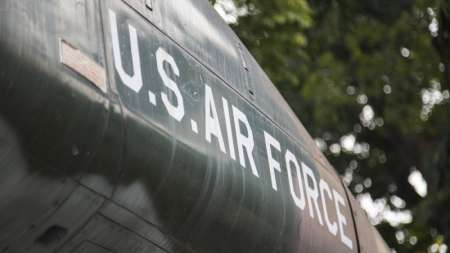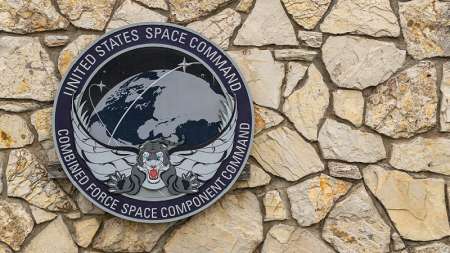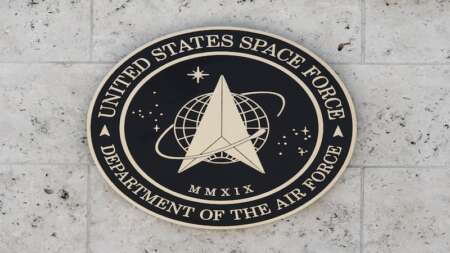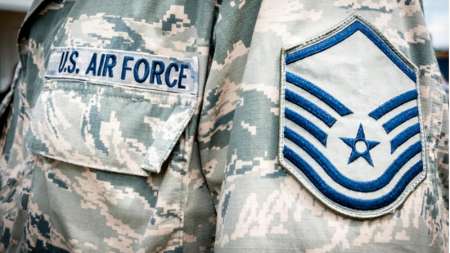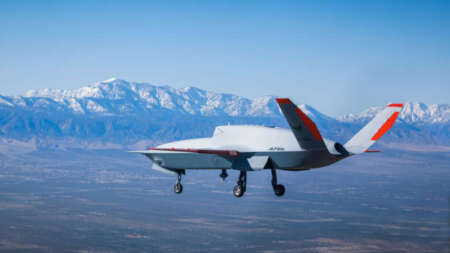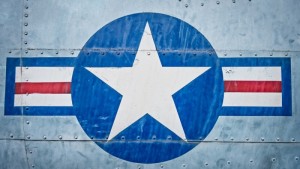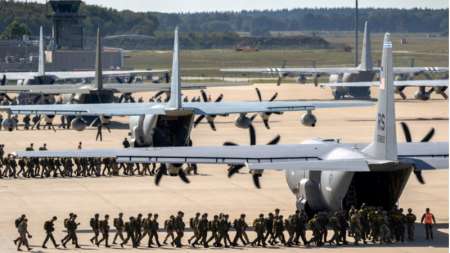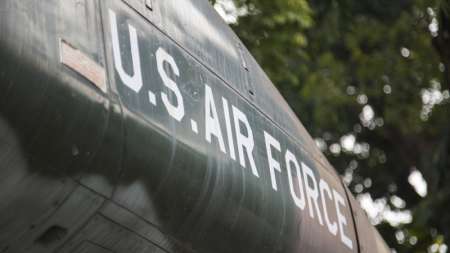The Senate voted on May 13 to confirm the nomination of Troy Meink as the next Secretary of the Air Force, nearly five months after President Donald Trump nominated him to serve as the top civilian overseeing both the Air Force and Space Force. […]
Matthew Lohmeier, President Trump’s pick to be Under Secretary for the Air Force, told lawmakers this week he believes that both the Air Force and Space Force need increased funding to achieve dominance in their respective domains. […]
The Department of the Air Force (DAF) has tapped Scott Heitmann to serve as its permanent chief technology officer (CTO) after serving as acting CTO for the past year. […]
Alexis Bonnell has stepped down as the chief information officer (CIO) and director of the Digital Capabilities Directorate at the Air Force Research Laboratory (AFRL), and said on Tuesday that she is joining OpenAI. […]
A new watchdog report reignites the debate about where the U.S. Space Command’s (SPACECOM) permanent headquarters should be located – Alabama or Colorado. […]
The Air Force Research Lab (AFRL) is serving up a new solicitation for its SOUP – Sensing Operation Using Prediction – program, seeking proposals to develop advanced AI technologies that strengthen the military’s intelligence, surveillance, and reconnaissance (ISR) capabilities. […]
President Donald Trump’s pick to lead the Department of the Air Force, Troy Meink, told senators today that he will continue to build up the U.S. Space Force through talent and acquisition. […]
Department of the Air Force Chief Information Officer (CIO) Venice Goodwine plans to retire after three decades of government service, she said in a LinkedIn post. […]
The Department of the Air Force (DAF) has undergone significant changes recently to automate its procurement processes and address risk management issues, a DAF official shared on Wednesday. […]
Despite the Department of the Air Force’s (DAF) push for a full office return by Feb. 7, the service is finding there’s not enough room to park every Airman and Guardian at their desks just yet. […]
Defense Secretary Pete Hegseth has directed the Department of the Air Force (DAF) to halt its reorganization plans until new service leadership is confirmed by Congress, a spokesperson for the DAF told MeriTalk. […]
The U.S. Air Force is getting a digital boost in safety reporting with the launch of its new SAFEREP App. SAFEREP was launched by the Department of the Air Force’s (DAF) safety office to replace the Airman Safety App as DAF’s new digital safety reporting tool. […]
The Air Force’s latest developments in artificial intelligence (AI) innovation are expected to take flight this year, Air Force Maj. Gen. Joe Kunkel said during Defense One’s “AI in the Skies” program on Jan. 28. […]
In his final weeks as Secretary of the Air Force, Frank Kendall warned lawmakers that artificial intelligence will play a crucial role in shaping future global conflicts. […]
Maj. Gen. Luke Cropsey has been nominated to lead the Air Force’s upcoming Information Dominance Systems Center, according to a Pentagon announcement. […]
The U.S. Air Force has tapped Laura Drummer to serve as the new chief data officer (CDO) for the Air Force intelligence community. […]
The U.S. Air Force this week awarded Accenture Federal Services a task order of up to $1.6 billion to efficiently scale and enhance its multi-cloud Cloud One environment, according to a press release from the IT service management company. […]
The U.S. Air Force plans to establish an operational technology (OT) sister office to its Cyber Resiliency Office of Weapons Systems (CROWS), the principal cyber advisor for the Air Force said on Tuesday. […]
The Department of the Air Force (DAF) announced on Tuesday that it appointed Susan Davenport to serve as the department’s new chief data and artificial intelligence officer (CDAO). […]
The Air Force Research Laboratory (AFRL) is seeking information from industry to help identify potential sources to conduct technical work for artificial intelligence (AI) mission management and flight autonomy, according to a request for information (RFI) issued last week. […]
The Department of the Air Force announced on Monday it awarded a $303 million contract to Leidos to oversee the department’s Advanced Battle Management System – Digital Infrastructure (ABMS-DI) network, which is a key piece in the Defense Department’s (DoD’s) Joint All-Domain Command and Control (JADC2) initiative. […]
The Department of the Air Force plans on releasing the second version of a reference architecture and roadmap for a new ecosystem that streamlines software convergence and data access across the service branch. […]
The Department of the Air Force Chief Information Officer on Tuesday announced the release of CLARA, a new tool designed to enhance visibility and understanding of AI initiatives across the department. […]
The Department of the Air Force has appointed Col. Bryan Sparkman as the service’s new deputy chief data and AI officer (CDAO). […]
In a strategic effort to boost operational efficiency and drive technological progress, the Department of the Air Force is highlighting the key role of embedded technologists through its Project Arc initiative. […]
The U.S. Air Force Research Laboratory (AFRL) awarded BAE systems a $48 million contract to further develop an analytics system used by military intelligence analysts. The contract announced on Aug. 6 will “mature components” and add new features to Insight, an intelligence, surveillance, and reconnaissance (ISR) system currently used by AFRL. Insight uses advanced data […]
The U.S. Air Force said it is looking for a cloud-based system to manage high security flights for top officials after identifying “significant cybersecurity vulnerabilities” in their current system. […]
Lt. Gen. Thomas Hensley officially took command of the Air Force’s information warfare command on Thursday during a ceremony at the Joint Base in San Antonio-Lackland, Texas. […]
A senior U.S. Air Force official said this week that getting timely appropriations from Congress is vital to ongoing efforts to create a modernized and cohesive Air Force and Space Force that can effectively address evolving global challenges and strengthen national security. […]
The Department of the Air Force (DAF) announced today it has selected Lara Schmidt to serve as vice chair of its Scientific Advisory Board (SAB), which provides independent advice to DAF leadership on science and technology matters. […]

